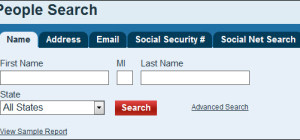 PDF and JPG are both an image file format. The main difference between the two is that while in case of PDF files the information can be processed (such as extracting text for machine editing), no such possibilities exist when it comes to other graphic formats such as JPG or GIF files. Converting between PDF and JPG and vice versa should not be a time-consuming process nor an expensive one for businesses looking to mitigate the costs. The easiest and most affordable option to cater for such demand is to use freeware software automatically making the conversion between the two formats. But let’s first have an outlook over the three main principles of JPG to PDF conversion.
PDF and JPG are both an image file format. The main difference between the two is that while in case of PDF files the information can be processed (such as extracting text for machine editing), no such possibilities exist when it comes to other graphic formats such as JPG or GIF files. Converting between PDF and JPG and vice versa should not be a time-consuming process nor an expensive one for businesses looking to mitigate the costs. The easiest and most affordable option to cater for such demand is to use freeware software automatically making the conversion between the two formats. But let’s first have an outlook over the three main principles of JPG to PDF conversion.
1. Optimizing the JPG image file prior to conversion. This goal can be achieved by either manually decreasing the image size and resolution to acceptable levels with a photo editor such as Adobe Photoshop or Adobe Fireworks (or even the Microsoft’s Paint) or by using a batch image-resizing software such as Fotosizer or FastStone. The most common size is 72dpi and medium compression.
2. Error-free files. If you manually resize the image prior to conversion, use the Save As option rather than Save in the photo editor software to make sure the new file has no errors and no unnecessary elements will be applied to the final PDF file following the conversion process.
3. Minimizing the human intervention. New software are focused to minimize the human intervention in the conversion process as much as possible. By following a pre-defined set of rules and procedures, new software allow automatic processing, monitor the storage location and minimize the risk of errors. Same rules apply either we refer to single file conversion or batch processing with the only difference that in the second case multiple files are simultaneously processed by the software.
Due to the implementation of the new HTML5 standards, in the recent years, along with offline JPG to PDF conversion software, online services have emerged, allowing users to manage many other image file formats, including JPEG, PNG, GIF, BMP, TIF, TIFF or WMF. Such services are mainly free and come up with a good conversion speed, security and reliability. Usually both single and batch file processing options are made available to end-users.







